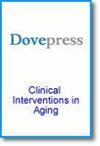Traditional and Non-Traditional Lipid Parameters in Relation to Parenchymal Hemorrhage Following Endovascular Treatment for Acute Ischemic Stroke in Anterior Circulation
IF 3.7
3区 医学
引用次数: 0
Abstract
Purpose: Lipid-lowering therapy is integral in acute ischemic stroke (AIS), yet the connection between lipid parameters and parenchymal hemorrhage (PH) after endovascular treatment (EVT) for AIS is not well-defined. This research aims to assess the association between various lipid parameters and the PH risk following EVT.Patients and Methods: We examined a database of patients who underwent EVT for AIS between September 2021 and May 2023 retrospectively. Traditional and non-traditional lipid parameters were documented. PH was identified on dual energy computed tomography images within 48 h. We employed logistic regression analysis and restricted cubic splines to examine the association between various lipid parameters and the risk of PH. The predictive capacity of the lipid parameters for PH was evaluated by comparing the area under the curve.
Results: The study included 384 patients, 65 of whom (17.7%) developed PH. After adjusting for potential confounders, only triglyceride was associated with PH among the traditional lipid parameters, while all non-traditional lipid parameters were related to PH. Based on ROC curve, the ratio of remnant cholesterol to high-density lipoprotein cholesterol (RC/HDL-C) exhibited the highest predictive capability for PH. Furthermore, our analysis revealed a significant nonlinear correlation between triglyceride, non-high-density lipoprotein cholesterol, RC, RC/HDL-C and PH risk.
Conclusion: In assessing the risk of PH after EVT, non-traditional lipid parameters are often superior to traditional lipid parameters. It is recommended that routine evaluation of non-traditional lipid parameters could also be conducted in clinical practice as well.
Keywords: endovascular treatment, hemorrhagic transformation, serum lipids
传统和非传统血脂参数与前循环急性缺血性卒中血管内治疗后实质性出血的关系
目的:降脂治疗是急性缺血性卒中(AIS)不可或缺的治疗手段,但血脂参数与AIS血管内治疗(EVT)后实质出血(PH)之间的关系尚未明确。本研究旨在评估各种血脂参数与 EVT 后 PH 风险之间的关系:我们对2021年9月至2023年5月期间因AIS接受EVT治疗的患者进行了回顾性研究。记录了传统和非传统血脂参数。我们采用逻辑回归分析和限制性三次样条来研究各种血脂参数与 PH 风险之间的关系。通过比较曲线下面积来评估血脂参数对 PH 的预测能力:研究共纳入了 384 名患者,其中 65 人(17.7%)罹患 PH。调整潜在混杂因素后,传统血脂参数中只有甘油三酯与 PH 相关,而所有非传统血脂参数均与 PH 相关。根据 ROC 曲线,残余胆固醇与高密度脂蛋白胆固醇之比(RC/HDL-C)对 PH 的预测能力最高。此外,我们的分析表明,甘油三酯、非高密度脂蛋白胆固醇、RC、RC/HDL-C 与 PH 风险之间存在显著的非线性相关性:结论:在评估 EVT 术后 PH 风险时,非传统血脂参数往往优于传统血脂参数。关键词:血管内治疗;出血性转化;血清脂质
本文章由计算机程序翻译,如有差异,请以英文原文为准。
求助全文
约1分钟内获得全文
求助全文
来源期刊

Clinical Interventions in Aging
GERIATRICS & GERONTOLOGY-
CiteScore
6.20
自引率
2.80%
发文量
193
期刊介绍:
Clinical Interventions in Aging, is an online, peer reviewed, open access journal focusing on concise rapid reporting of original research and reviews in aging. Special attention will be given to papers reporting on actual or potential clinical applications leading to improved prevention or treatment of disease or a greater understanding of pathological processes that result from maladaptive changes in the body associated with aging. This journal is directed at a wide array of scientists, engineers, pharmacists, pharmacologists and clinical specialists wishing to maintain an up to date knowledge of this exciting and emerging field.
 求助内容:
求助内容: 应助结果提醒方式:
应助结果提醒方式:


